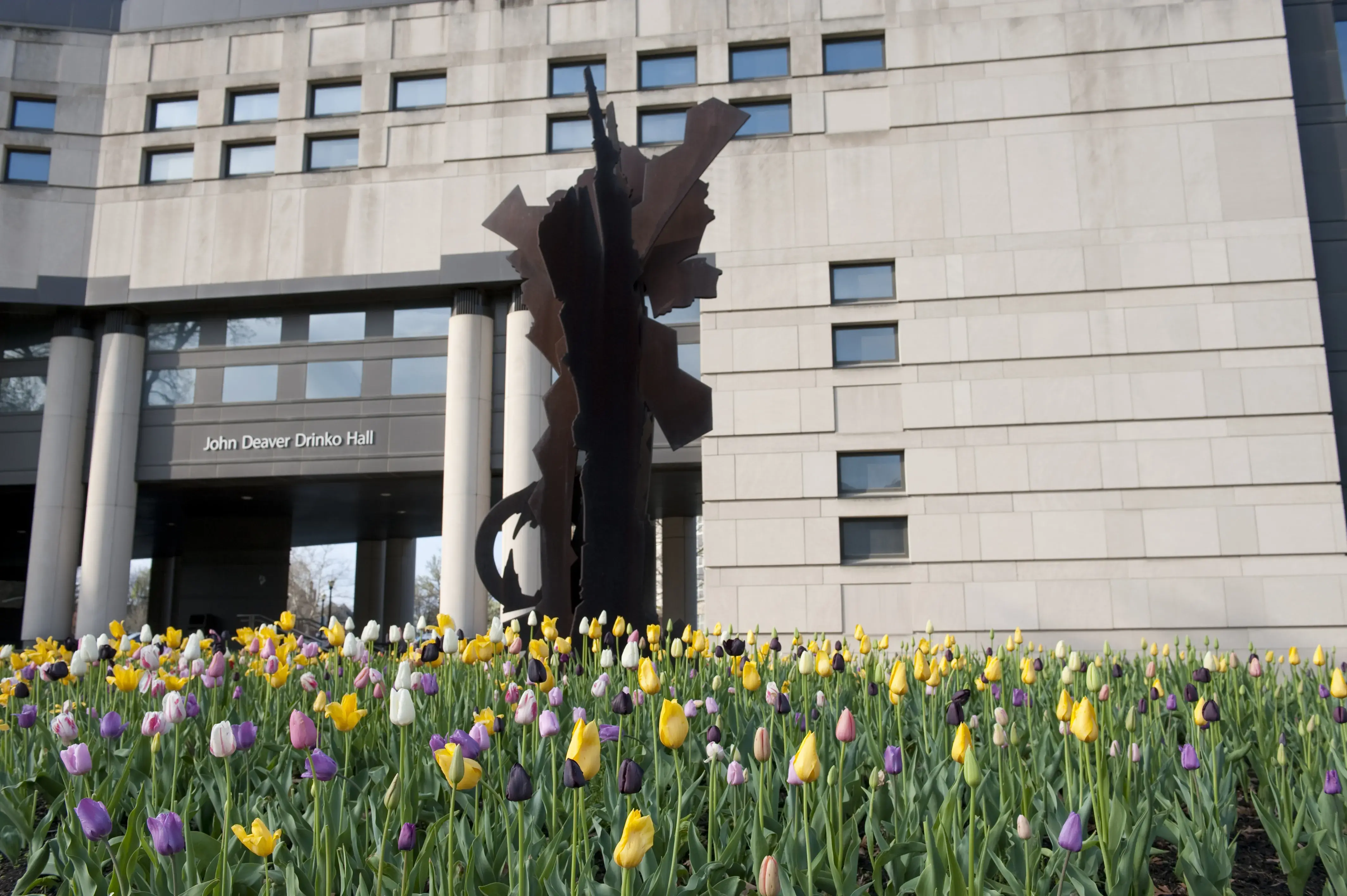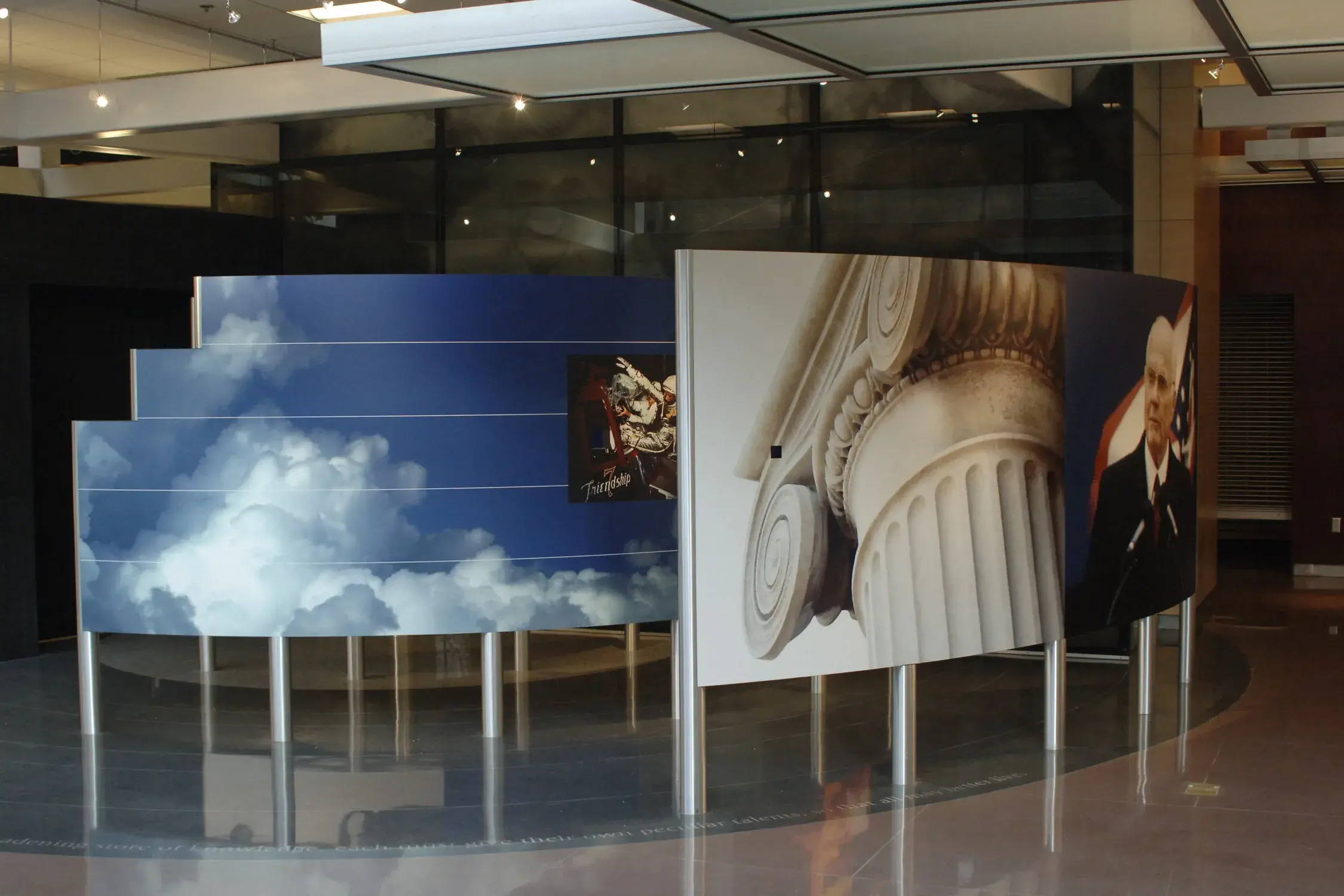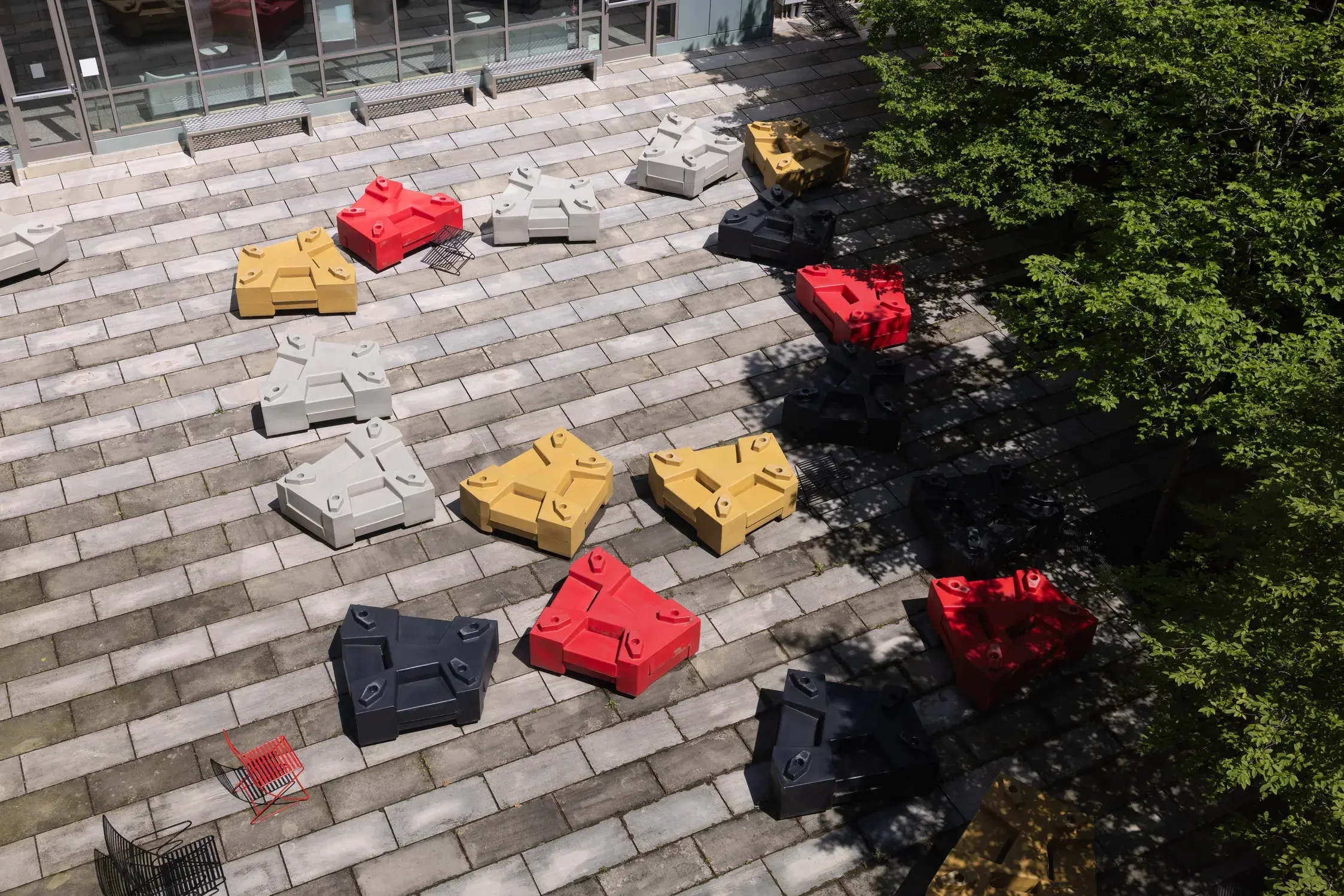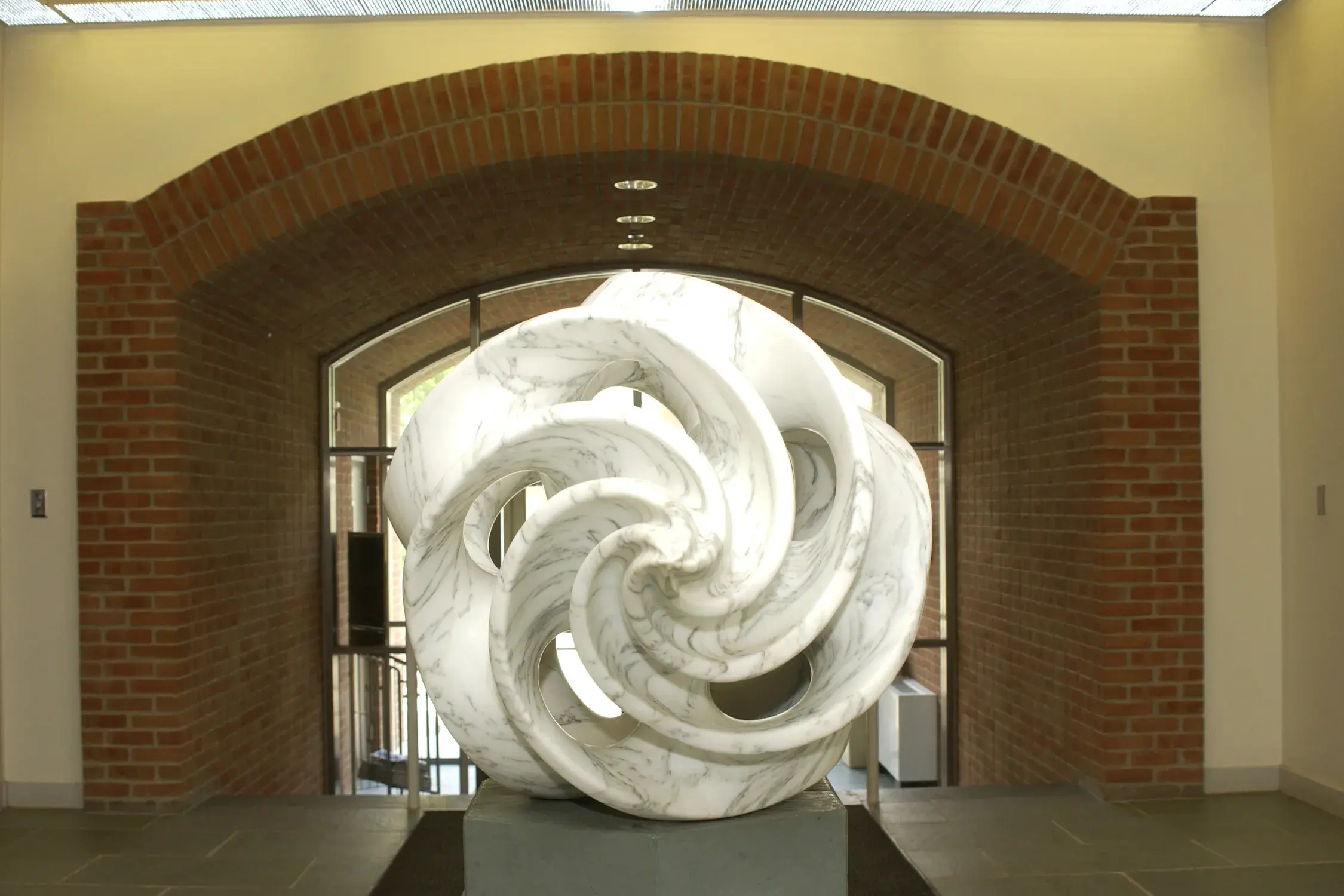
About the Art
Craig Schaffer’s Golden Hourglass is well suited to its home in the Mathematics Tower on The Ohio State University’s campus. Schaffer’s sculptures are frequently based in mathematics. In particular, his use of fractals celebrates the presence of complexity and repetition in the world around us and infinite surfaces that mimic life’s nonlinear, reflexive character. They often suggest natural motifs: the perfect spiral of seashells, the reach of leaves toward sunlight and in the case of Golden Hourglass, the complex unfurling of clouds moving through Earth’s atmosphere.
Golden Hourglass is a large, weighty marble sculpture that appears delicate and if not weightless, at least remarkably light. The helical symmetry — the sculpture forms a spiral around a central origin point — creates a sense of motion and continuity, as though the material were liquid and constantly in flow. Even the color of the marble, a warm ivory threaded with delicate brown veining, suggests the influence of the atmosphere. Appropriate to its title, Golden Hourglass appears as if bathed in the setting sun's light. The work is mathematically exact but calls to mind the beauty of the natural world.
Collection of The Ohio State University. Funded through the Ohio Percent for Art program.
Material
Marble
Location
Inside Mathematics Tower
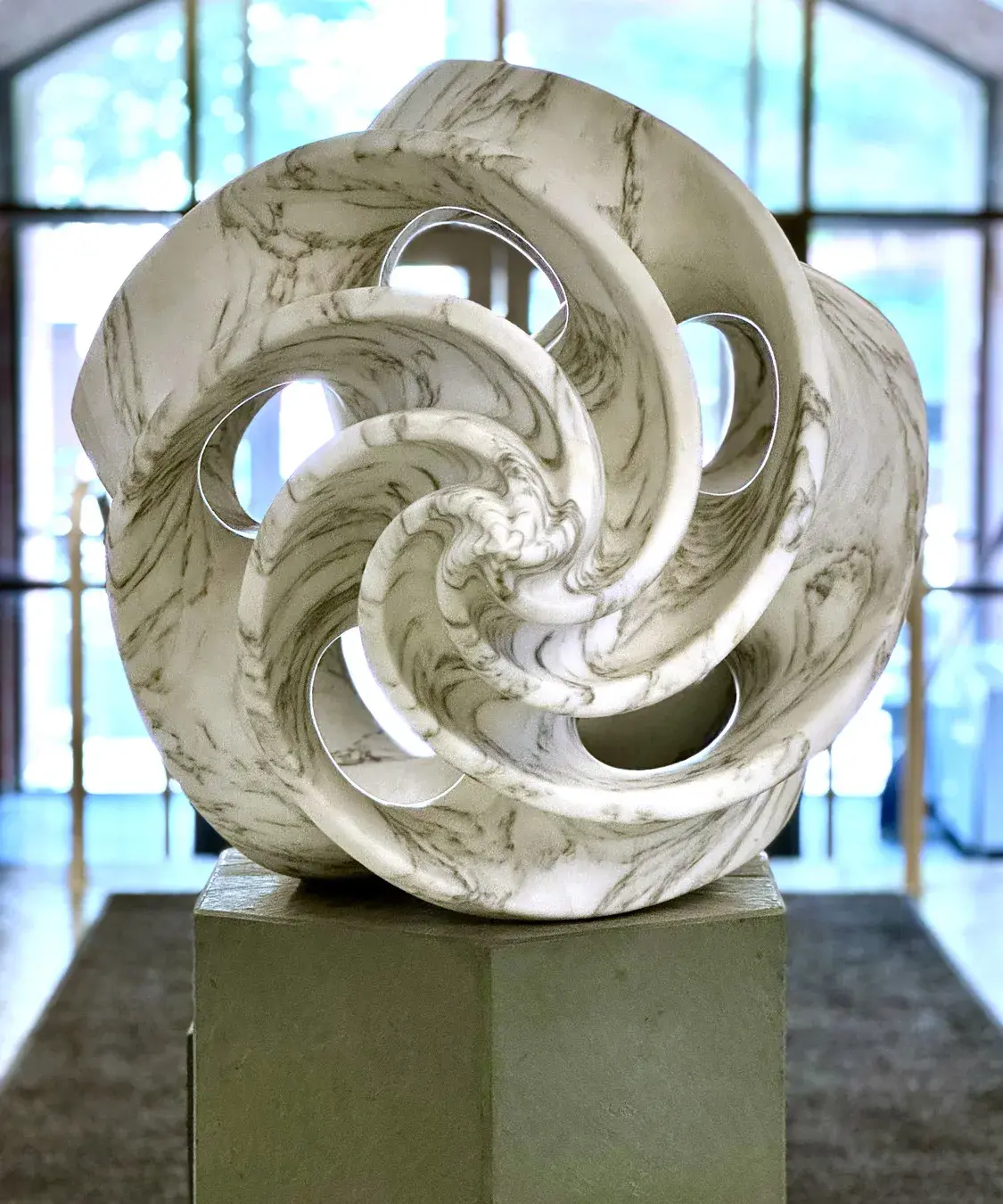

About the Artist
Craig Schaffer is an American sculptor whose work frequently incorporates the monumental mediums of steel, bronze and marble. The enduring nature of these materials is often offset by the implied movement of the forms, which call to mind the patterns of plant growth or the motion of atmospheric bodies. Schaffer’s sculptures also often feature a dramatic use of color, whether from the inherent hues of his materials or the creative use of paint and enamel. His painted surfaces often mimic the palette of vibrant plant life and the colors of technologies, such as thermal imaging, used to visualize scientific data.
Schaffer’s works are generally not intended to represent specific natural objects or events. As the artist says: “My sculptures all contain spirals that, instead of illustrating any specific phenomenon, grow in the same reflexive manner as real complex systems.”
